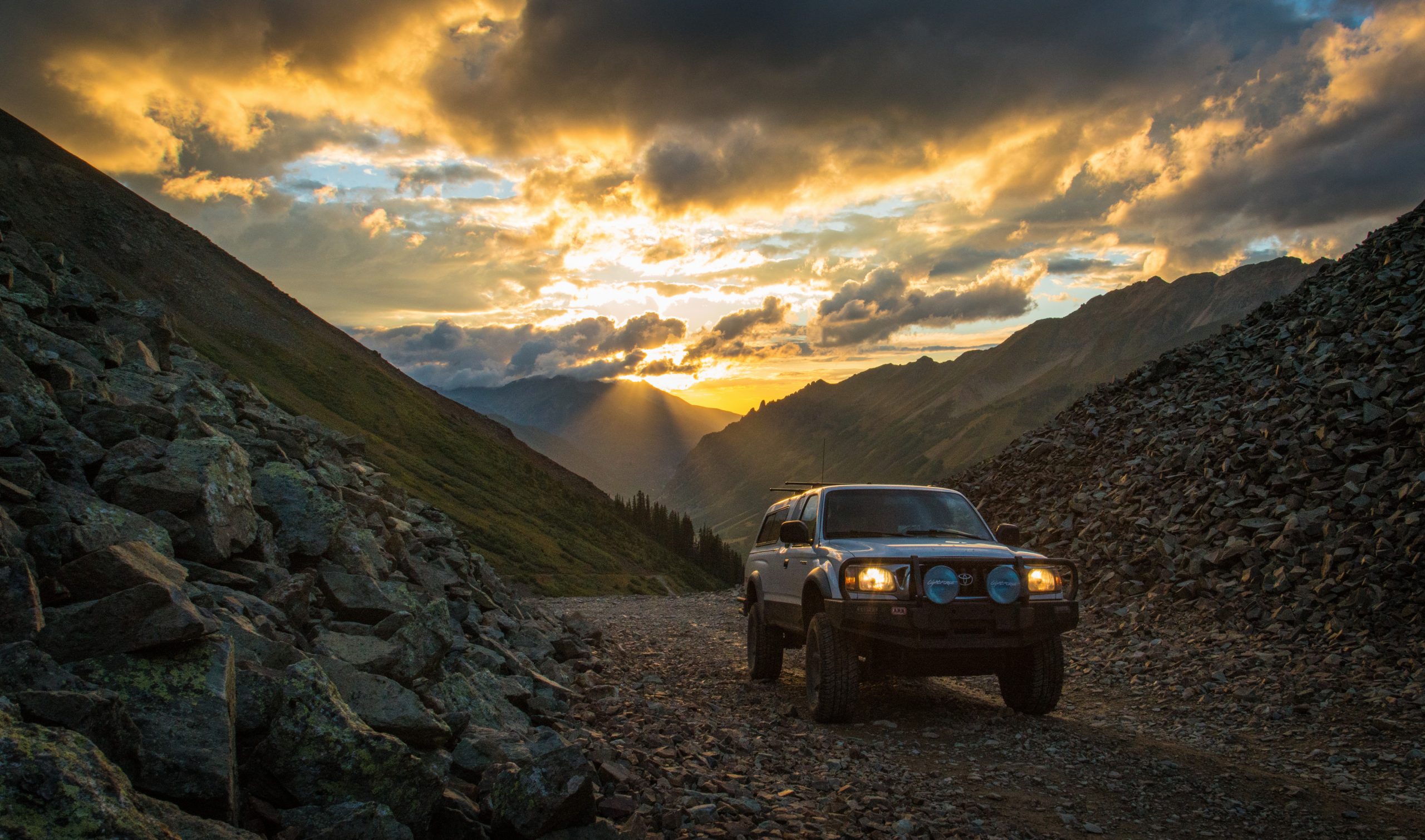
For the last ten years, I’ve had a pair of Lightforce Blitz lights on the front of my Tacoma – and they’ve been awesome lights. Ten years is a long time to have any product, and it’s even more impressive when you consider that these lights have been outside for that entire time. These lights have baked in the Arizona sun, and frozen in the Colorado winter. They’ve held up to more than 150,000 miles of driving, and have continued to light my way every time I’ve hit the switch. So it’s safe to say that Lightforce knows how to make a solid light. Now however, I’ve got a pair of Lightforce’s new HTX2 lights to play with, and based on my old Lightforce lights, these HTX2s have a lot to live up to.

-
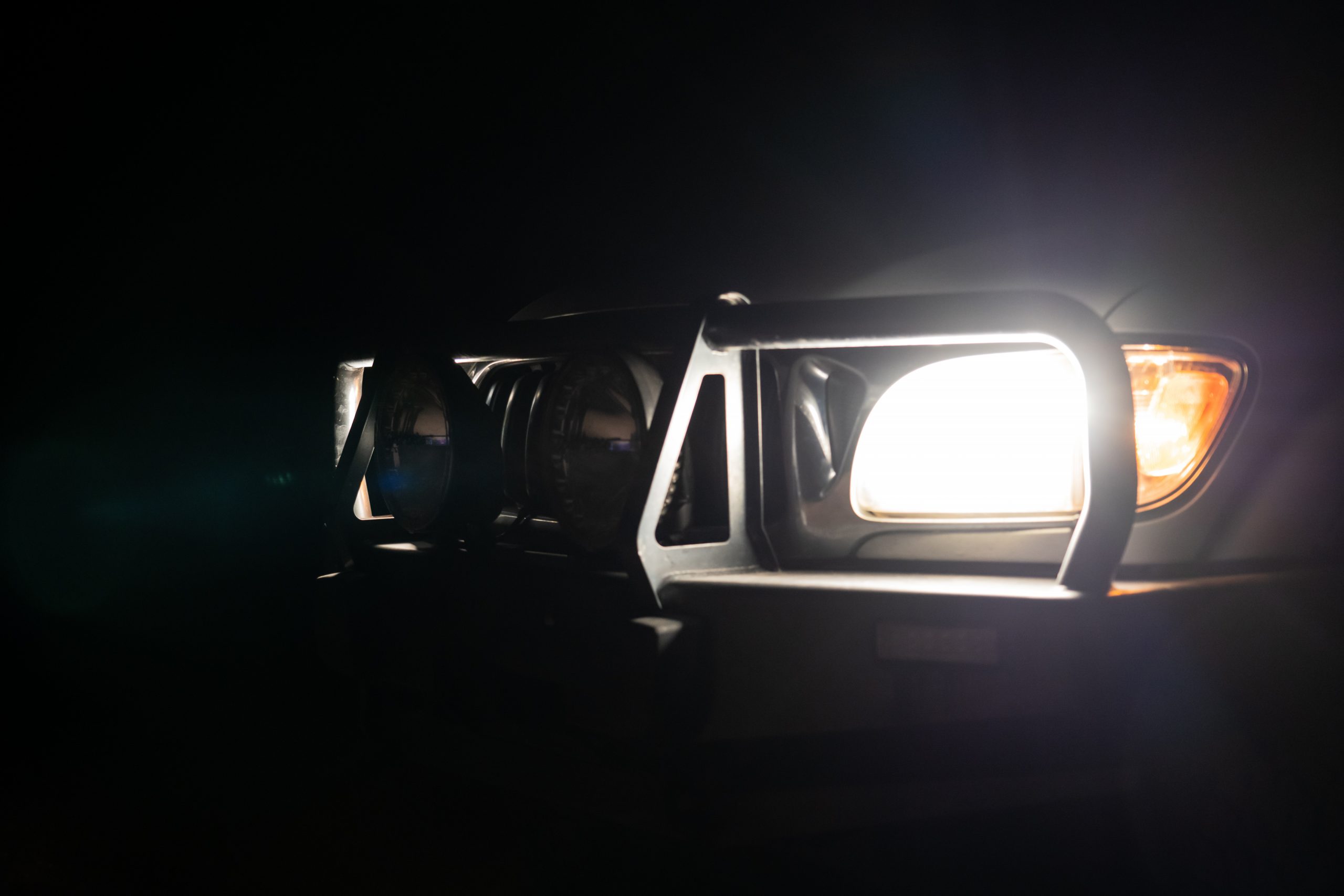
Factory Lights -

HTX LEDs -
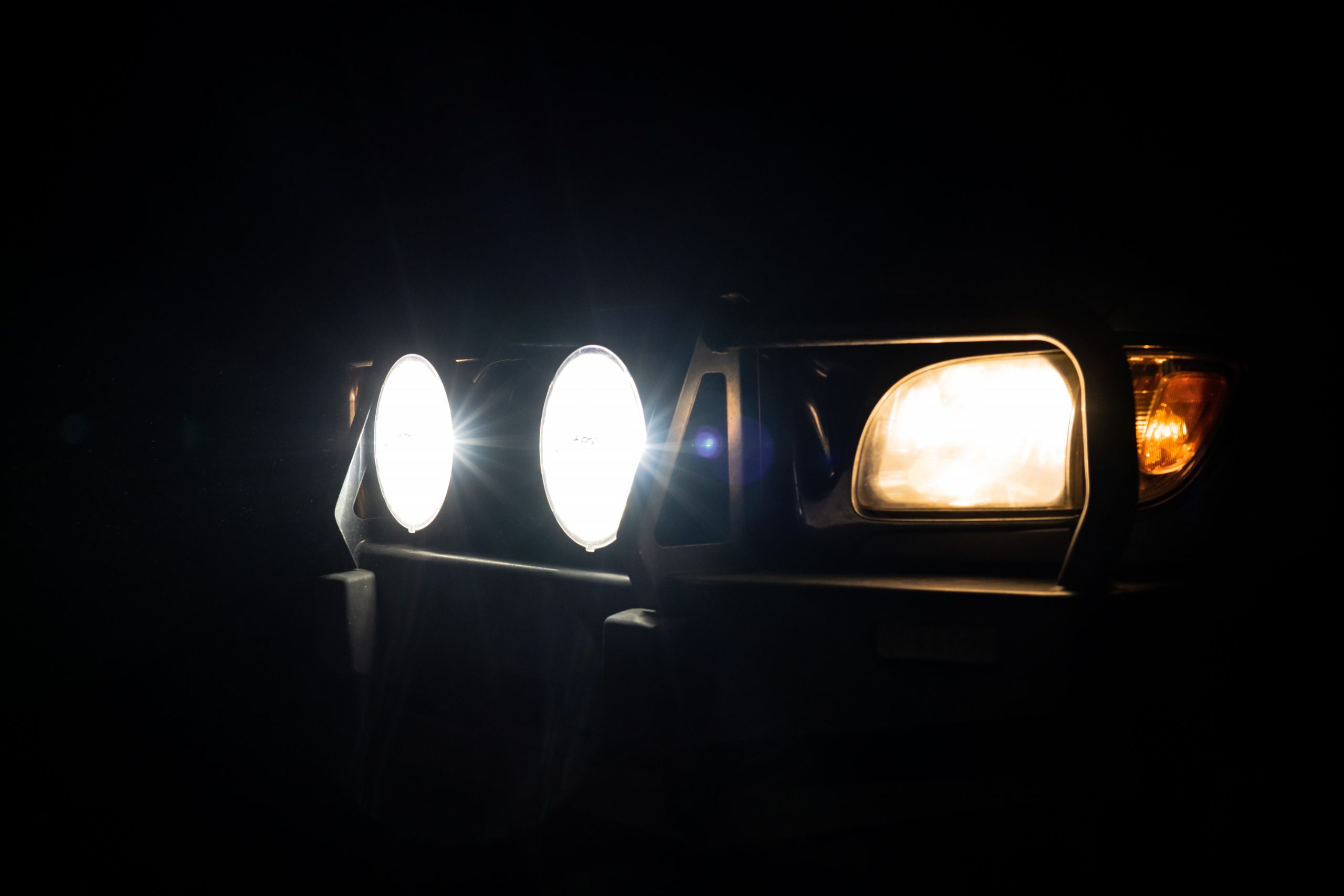
HTX2 LEDs and HIDs
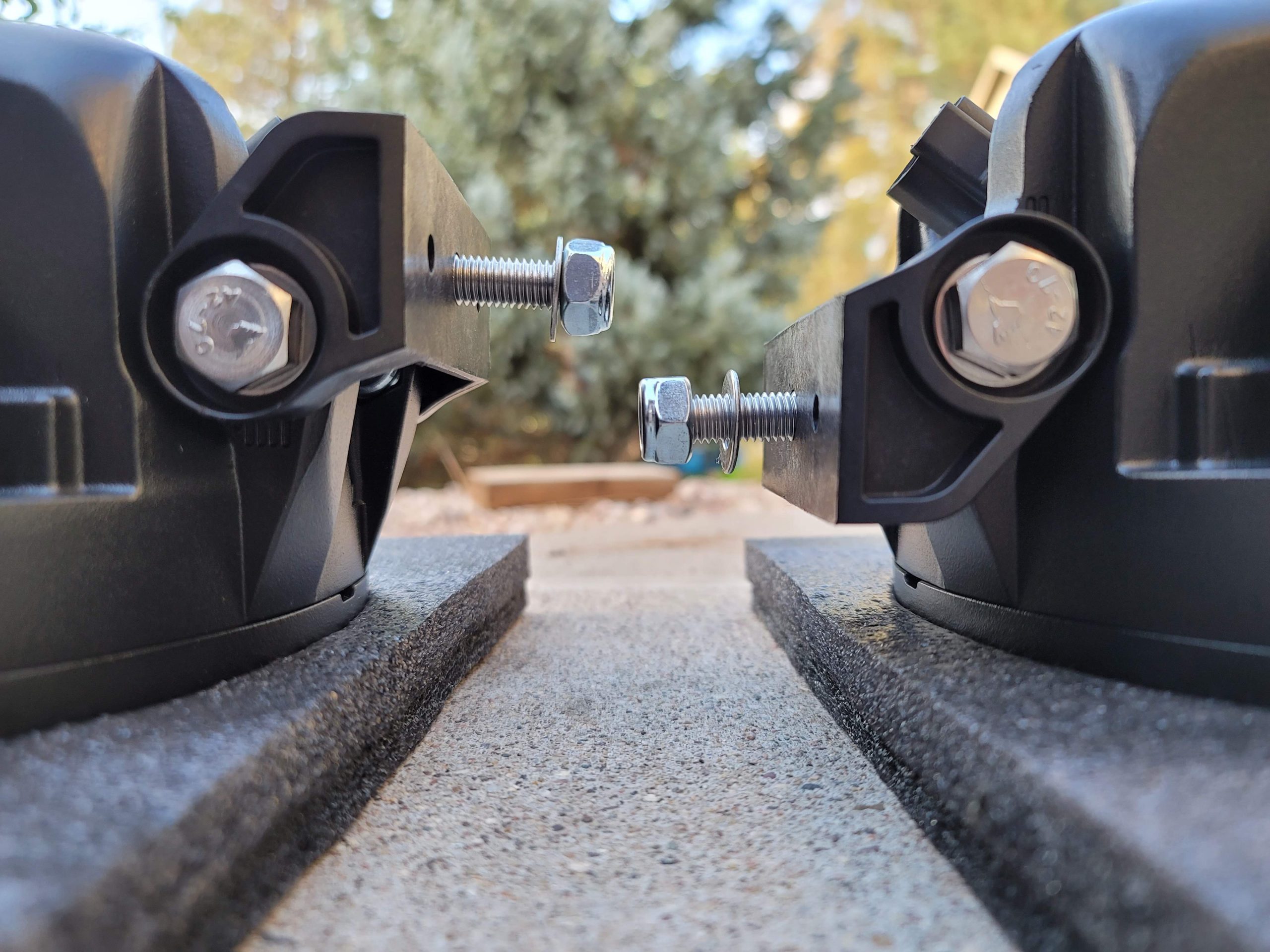
The HTX2 is Lightforce’s latest and greatest driving light, and it packs a very unique feature set into a very well-made bombproof housing. By combining HID and LED technology, Lightforce has essentially created one light that can do it all. A single HID bulb can throw a Lux of light well over a mile, and 20 LEDs cast a wide arc of light that gives you flood coverage to compliment the distance of the HID. Both the HID and LEDs are tied to their own circuits, so you can run the HID and LEDs together, or each circuit individually to match your needs. All of this light is packed into an aluminum housing that’s a work of manufacturing art, and sealed to exceed IP68 and IP69K levels. Just picking a single HTX 2 up lets you know that these lights are the real deal. They’re heavy, and they feel so well made that you could use one as a wheel chock – but I’ll leave that sort of test to the YouTubers who are known for such torture testing. The point is, your vehicle will break before these lights do.


Included with a pair of HTX2 lights is a wiring harness that is well made to the point that it’s actually something you’re going to want to use. All of the conductors are high quality, and little details like adhesive heat shrink, braided PET sheathing and split loom all add up to make a harness that will last for years in any operating environment. The included harness is designed to work with a switch controller like an sPOD, which makes the wiring process incredibly simple. All you have to do is plug the harness into each light, and then terminate the two hots for the two lighting circuits and a ground to the sPOD.
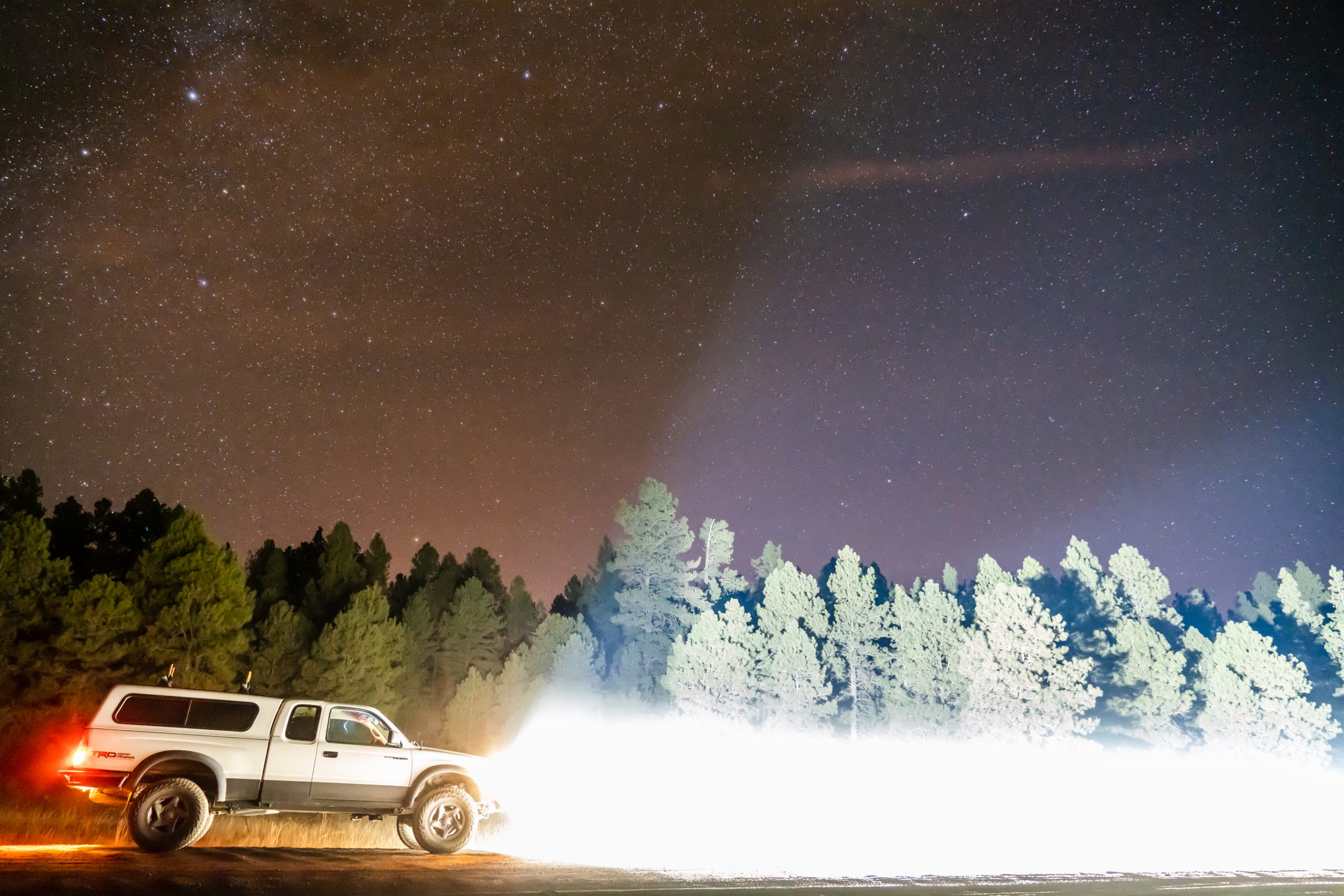
If your vehicle doesn’t have a switch controller, Lightforce also makes a wiring harness that comes complete with relays and switches. This harness can also be integrated into the vehicle’s factory high beam wiring if desired. Like the included harness, this optional harness is very well made, and takes all the work out of pinning out relays and fuses and the other elements needed to properly wire in a set of lights, so know that it’s an option if you need it.
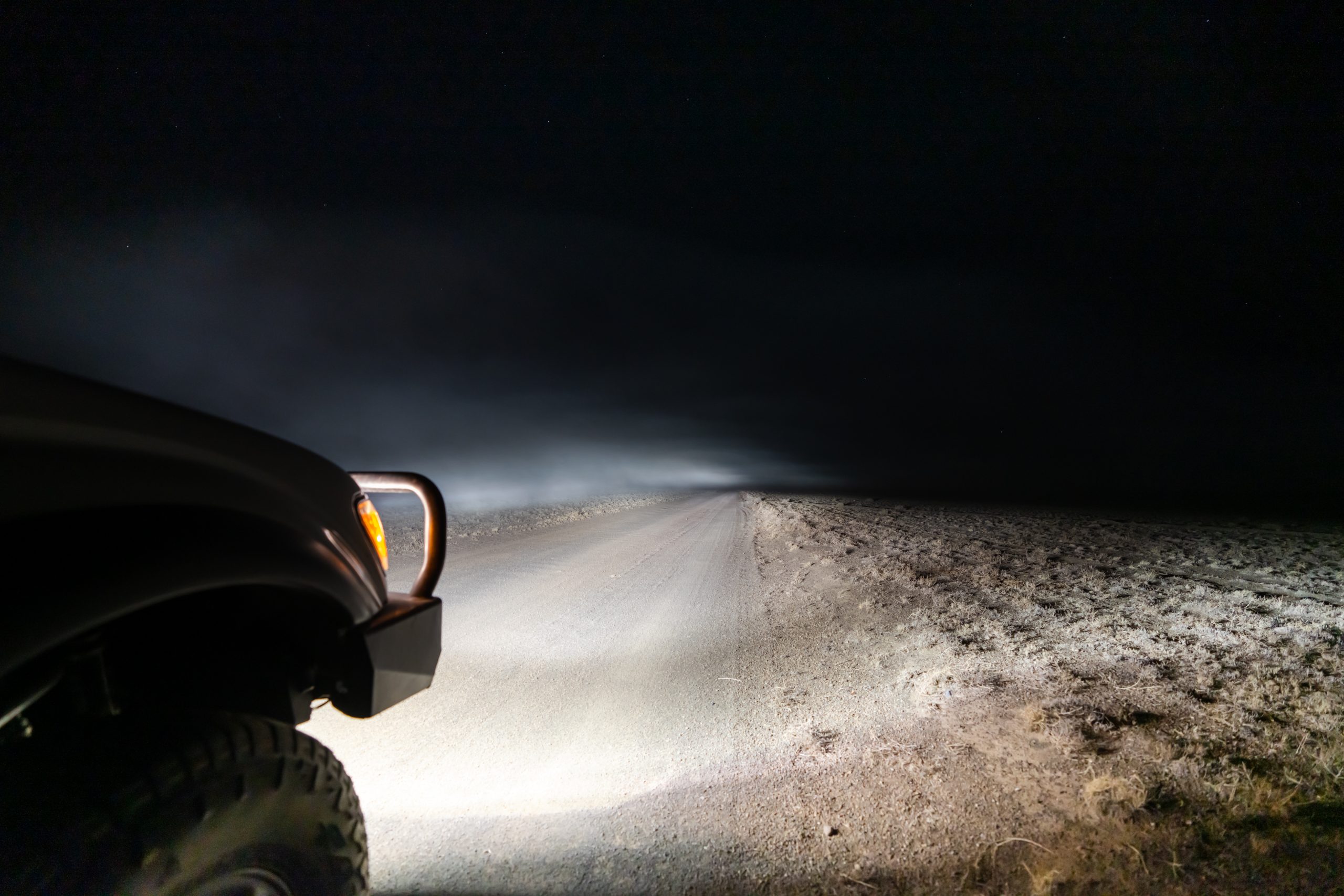
Once everything is wired up, take a couple of minutes to look at the other useful stuff that comes in the box while you’re waiting for it to get dark out. The pair of HTX2s comes with black out filters which are great if you live where such things are required when you’re driving on road. There’s also a set of clear filters included with the kit and I have to say that I really like having filters on these lights as they’re a perfect for protecting your expensive lights from flying rocks and other road debris. Lightforce has been doing cool things with filters for years, and I have to point out that I’ve really enjoyed their combo filters on my old Blitz lights. The combo filter gives you a flood and spot pattern out of each light, which really gives you the best of both worlds. You get some spot coverage for distance lighting, and you get some flood coverage for seeing what’s hiding in the trees just off the road, or what’s coming around the bend. Combo filters do exist for the HTX2, but I haven’t played with them.

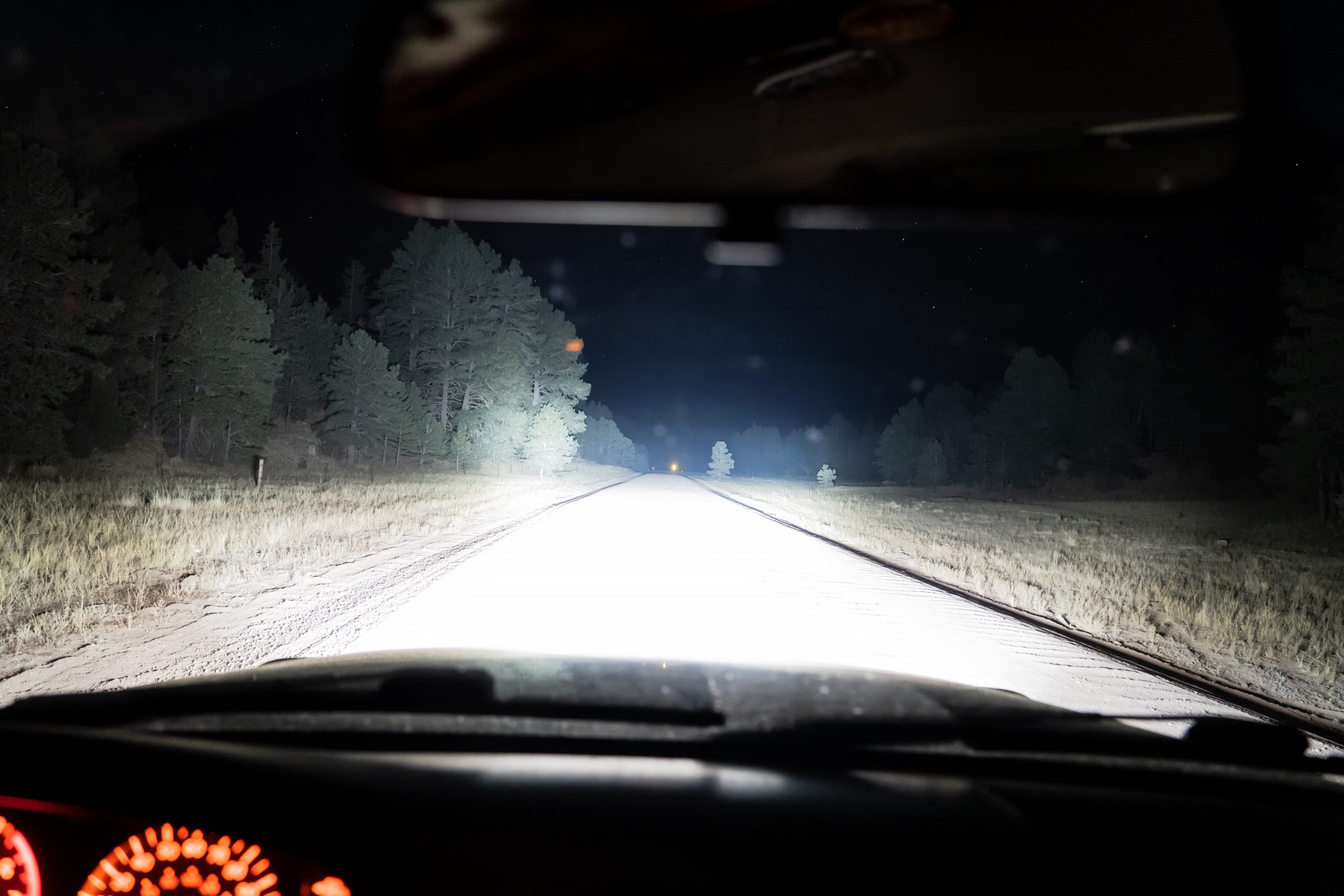

Thankfully, the two circuits on the HTX2 mean that you can cover spot (distance) and flood (fog) lighting just by turning on both circuits. The LED circuit comes to life instantly and bathes the area in front of your vehicle in a wide swath of light that’s great for cornering or seeing what’s in the woodwork lining the road at night. Whether you’re trying to avoid hitting those deer you keep seeing in the trees, or pick your way thought a bit of technical trail, the LEDs to a great job of keeping things bathed in light close to your vehicle. The output of modern LEDs is quite impressive, and Lightforce as you would expect, has sourced quality diodes. At a 5000K color temperature, they’re close enough to sunlight that color reproduction isn’t an issue – In other words, things look very close to how they would during the daytime.
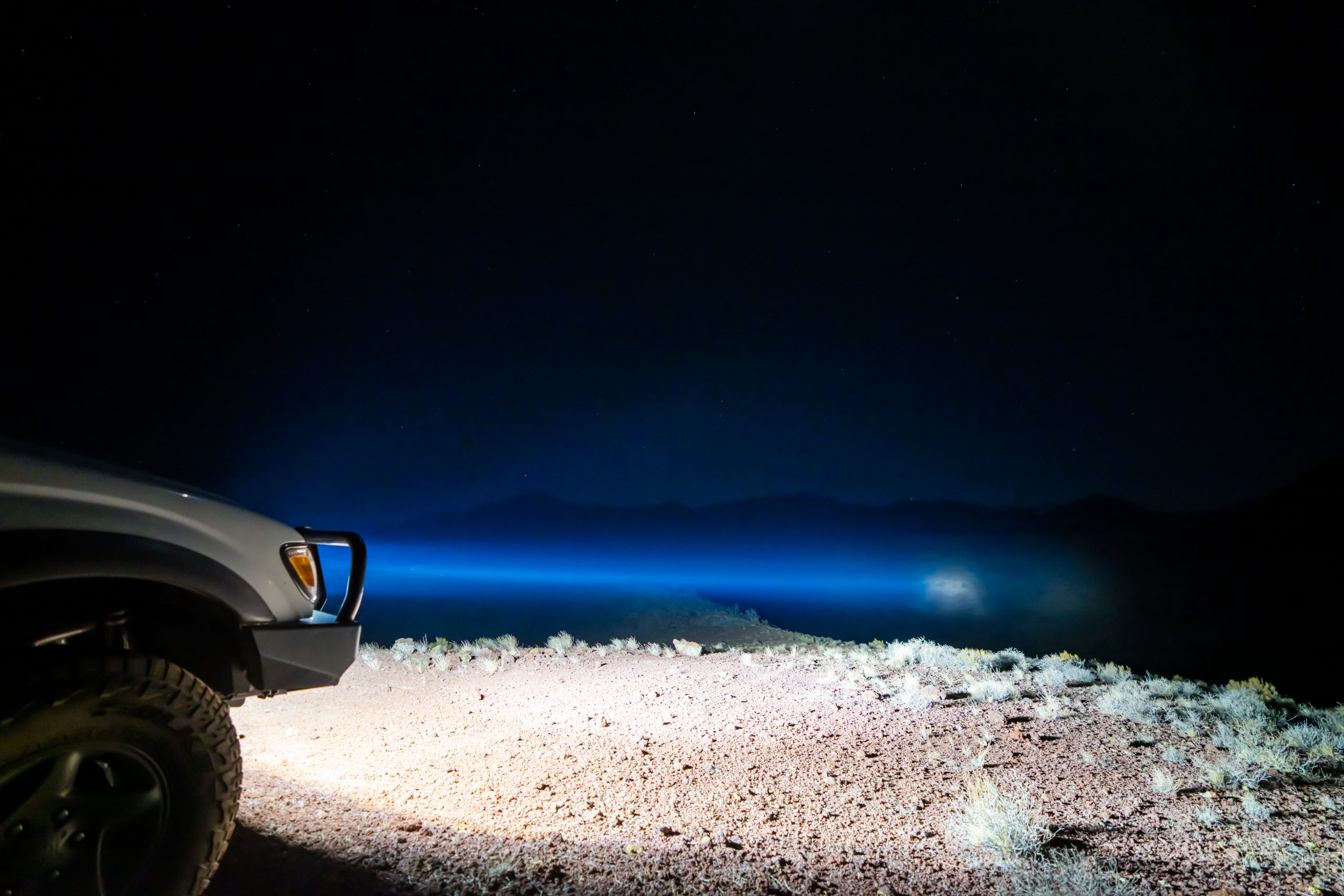
Likewise, the HID circuit also puts out light at 5000k, and boy can these HID bulbs cover some distance. It wasn’t long ago that HID lights were are cool as it got for off-road lighting, so it’s been a fun rediscovery getting to use HID off-road lights again. Know that even in 2020, HIDs are still a very relevant lighting technology. The HIDs on the HTX2s will take a couple of seconds to come up to full power, but once they’re on you know it. Lightforce claims a lux of light at 1811 yards, which is over a mile, and the DOT C2 reflective tape agrees with the advertised spec in my testing. If you’re wondering what a lux is, it’s the unit of measure for how much light is actually making onto a given surface. Many light manufactures rate their lights in lumens, which is a measurement of light output at the light, and it’s important to remember that said output could be going anywhere – up into space or other places where it’s not providing any value included. Lux lets us know how much light is actually making to the surface we want to shed light on, and it’s a measurement I wish more manufactures would spec. And it is here where I need to point out something with the HID’s on the HTX2.
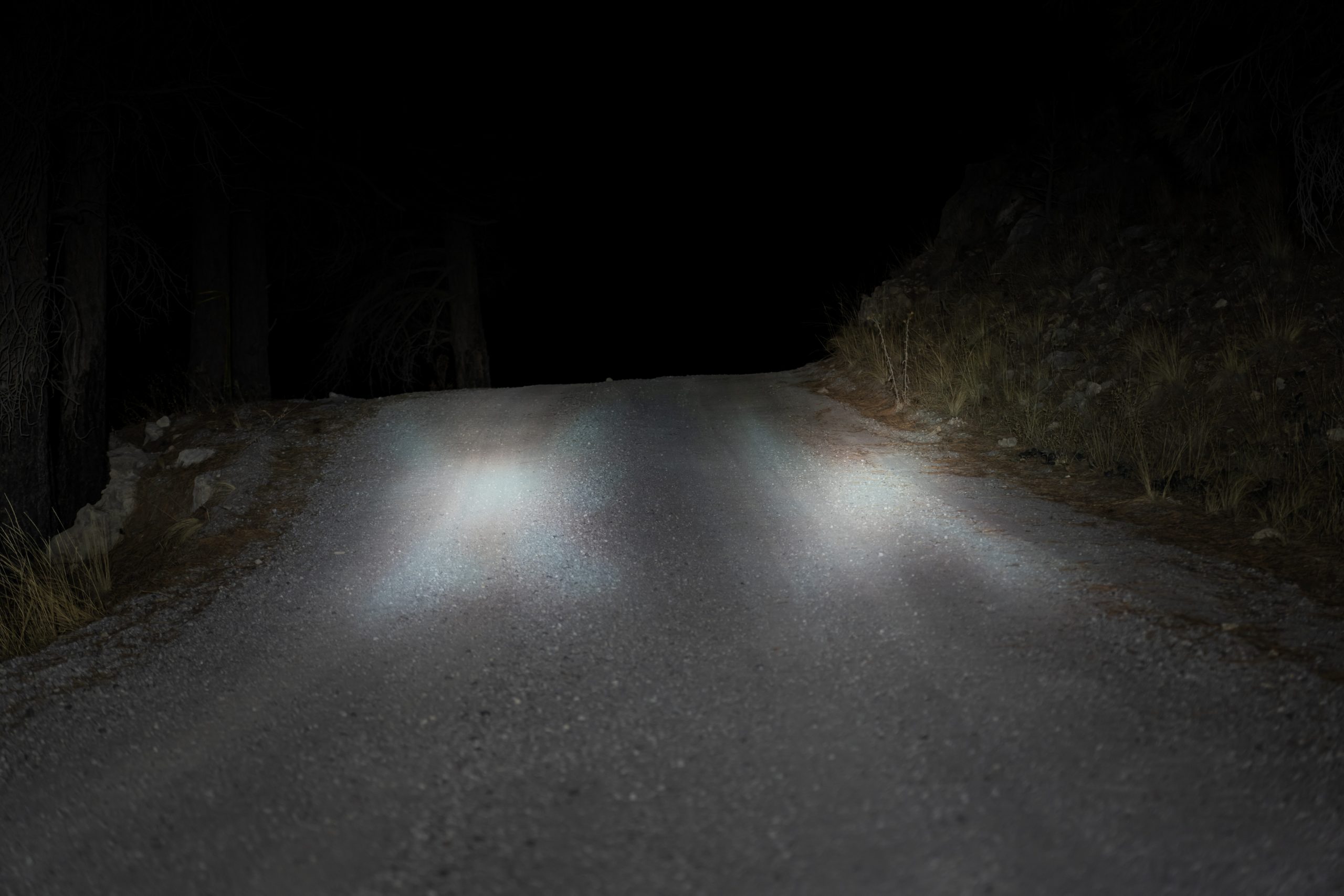
I intentionally didn’t convert my 240s to HID because I didn’t want to give up my nice even halogen light output for the X pattern that Lightforce HIDs made, so I’m bummed to see that the X pattern is still a thing on the HIDs in the HTX2. In a world where most folks are going to be familiar with carefully shaped beams of light from their factory lights or from LEDs which produce even output, the HID X pattern just falls short. Now make no mistake, the HIDs can send light a long way into the night, and I’ll take a X pattern on a deer way down the road, over no light on the deer any day of the week – its just surprising to see that this hasn’t changed. However, I would have to expect that using the combo filters on the HTX2 would solve this problem quite nicely, and render that X pattern into a much more uniform beam pattern. Lightforce claims a Lux at 1205 yards on the HTX2 when using a combo filter, and more than half a mile of range is still quite awesome.
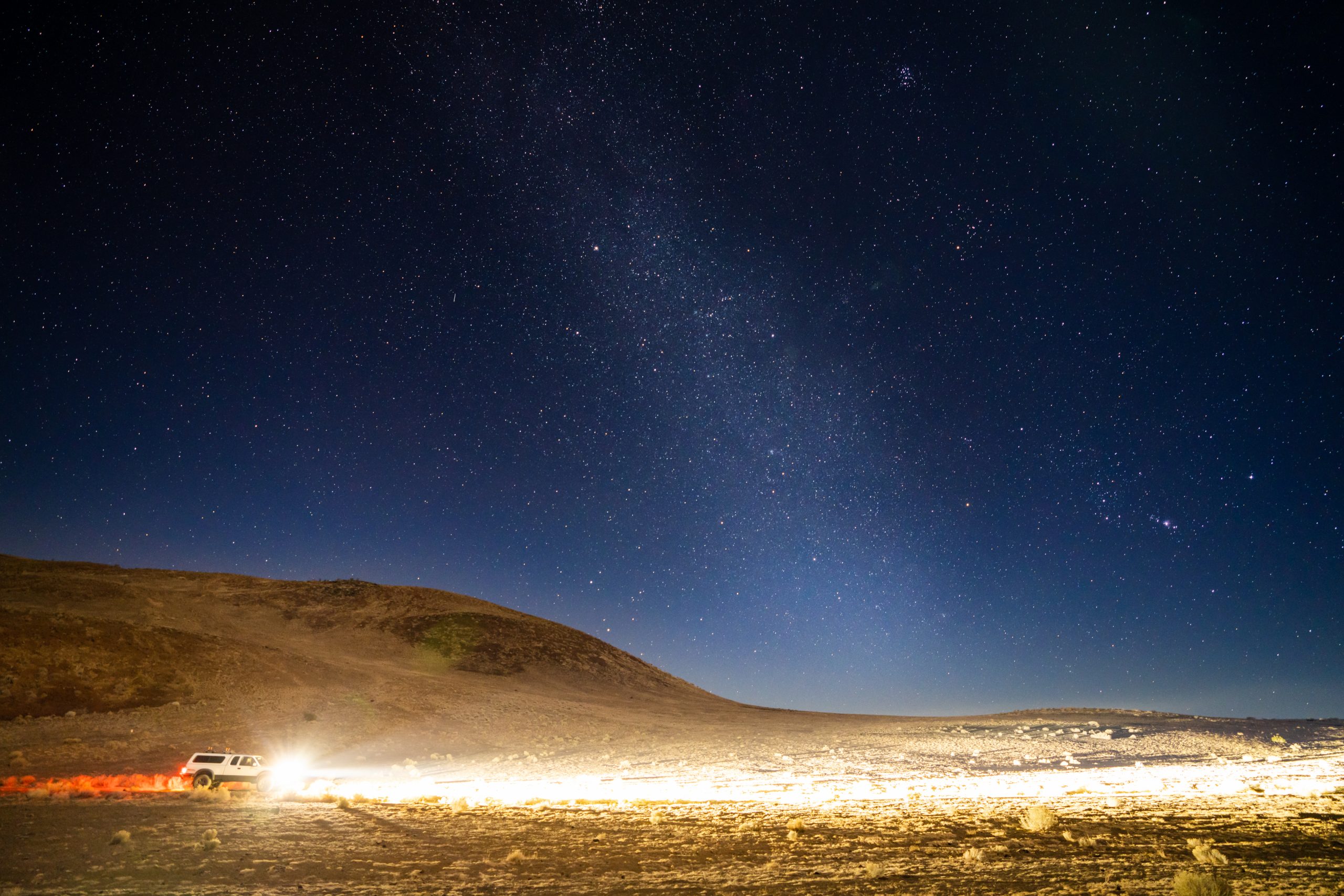
Getting light where you need it hundreds of yards down the road is something that takes time spent carefully aiming your lights to fully benefit, so be prepared to spend time aiming these lights. Changes to how much weight your vehicle is carrying will also change where your HIDs are shining their lights, so be prepared to nudge your HTX2s, just as you would have to adjust any other long range light for best results. Lightforce specs a pair of super beefy 10mm hex cap screws to secure the tilt or pitch axis of the lights and with a carefully set torque, you can adjust the lights by hand and not have them move around on you while driving at night – no matter how bad the washboards get.

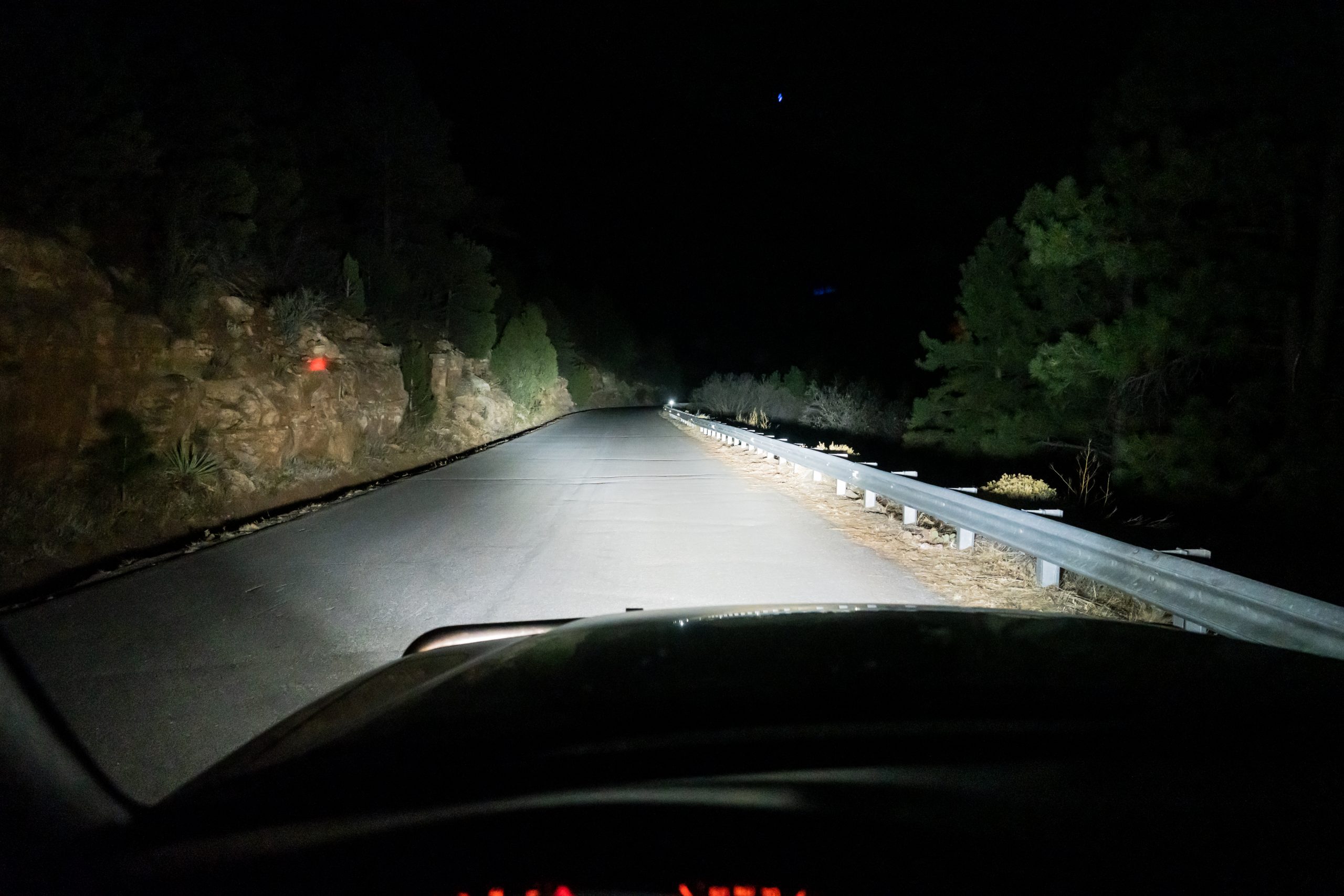
In use – the HTX2s are an outstanding option for a quiver of one light. Other lights on the market only allow you to run the flood circuit or the spot – not both. Yet with the HTX2s, you can have all your light any time you need it, and that is exactly what makes it such a great option for vehicles that will only get a couple additional lights. When you need flood coverage – you have it with the HTX2. When you want to see what is way out there in front of you – you can with the HTX2. All of this functionality is packed into a light housing that I would fully expect to last longer than the vehicle these lights are installed on. Lighting is absolutely a product where you get what you pay for, so do it right the first time and buy something quality that will last, and most importantly that will light your way every time you hit the switch.

Lightforce’s HTX2s have proven to be worthy successors to the Blitz lights that I’ve run for years. The HTX2s bring additional light output and control (thanks to their two circuits) to the front of my vehicle to make a more than worth it lighting upgrade. With just two lights, I have all the confidence in the world to drive as fast as I want at night without worry of outrunning my light, or having wildlife sneak up on me – and that confidence can’t be overstated. Lightforce has only improved on the formula of quality and performance that made the Blitz such awesome lights and carried that forward into the HTX2. If you’re looking for a one light solution that will make a night and day difference in your lighting system, the HTX2s are going to be hard to beat. One light can do a really good job of doing it all – and I have no reason to doubt that the Lightforce HTX2 lights will work flawlessly for years and years to come.
FULL DISCLOSURE: Lightforce Lights provided a set of HTX2 Lights to the author free of charge for the purposes of this review.
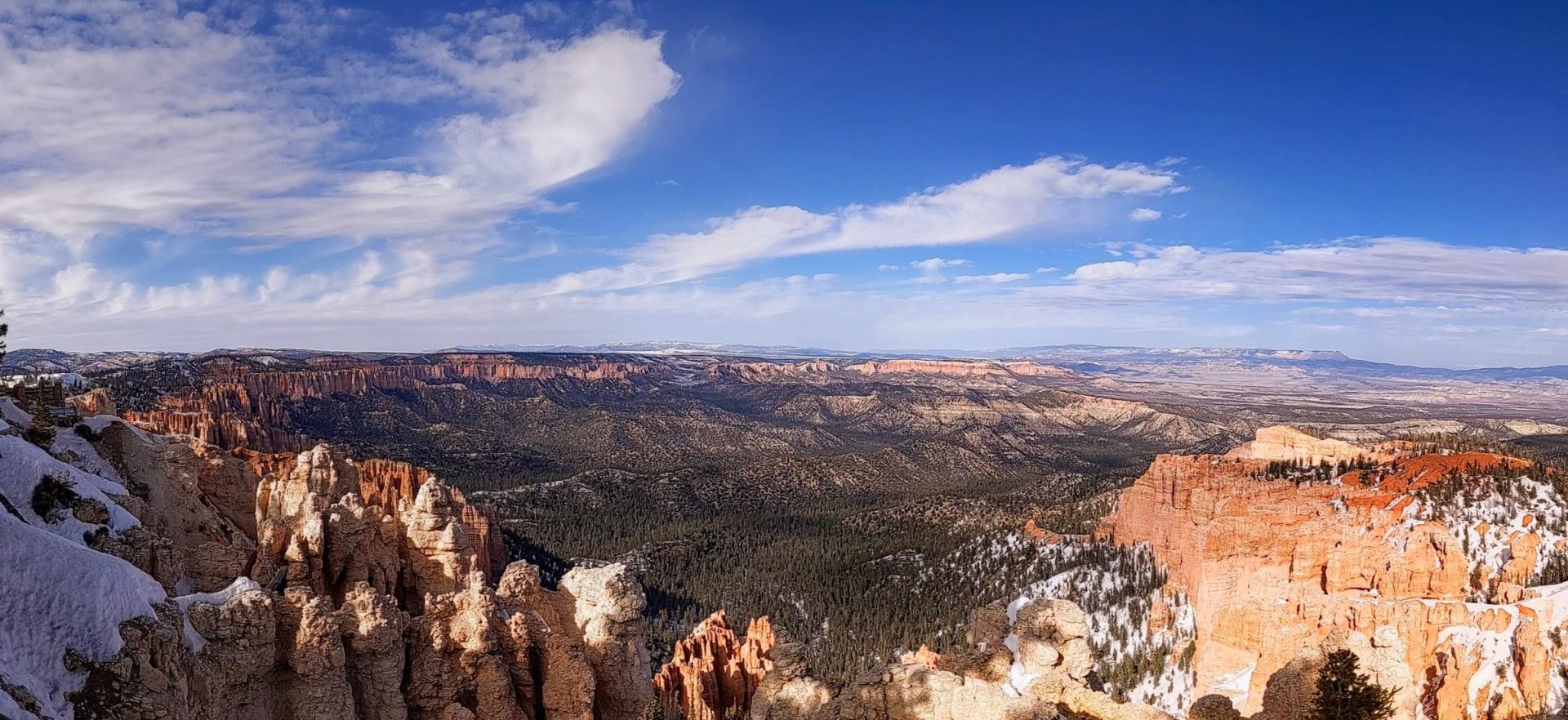





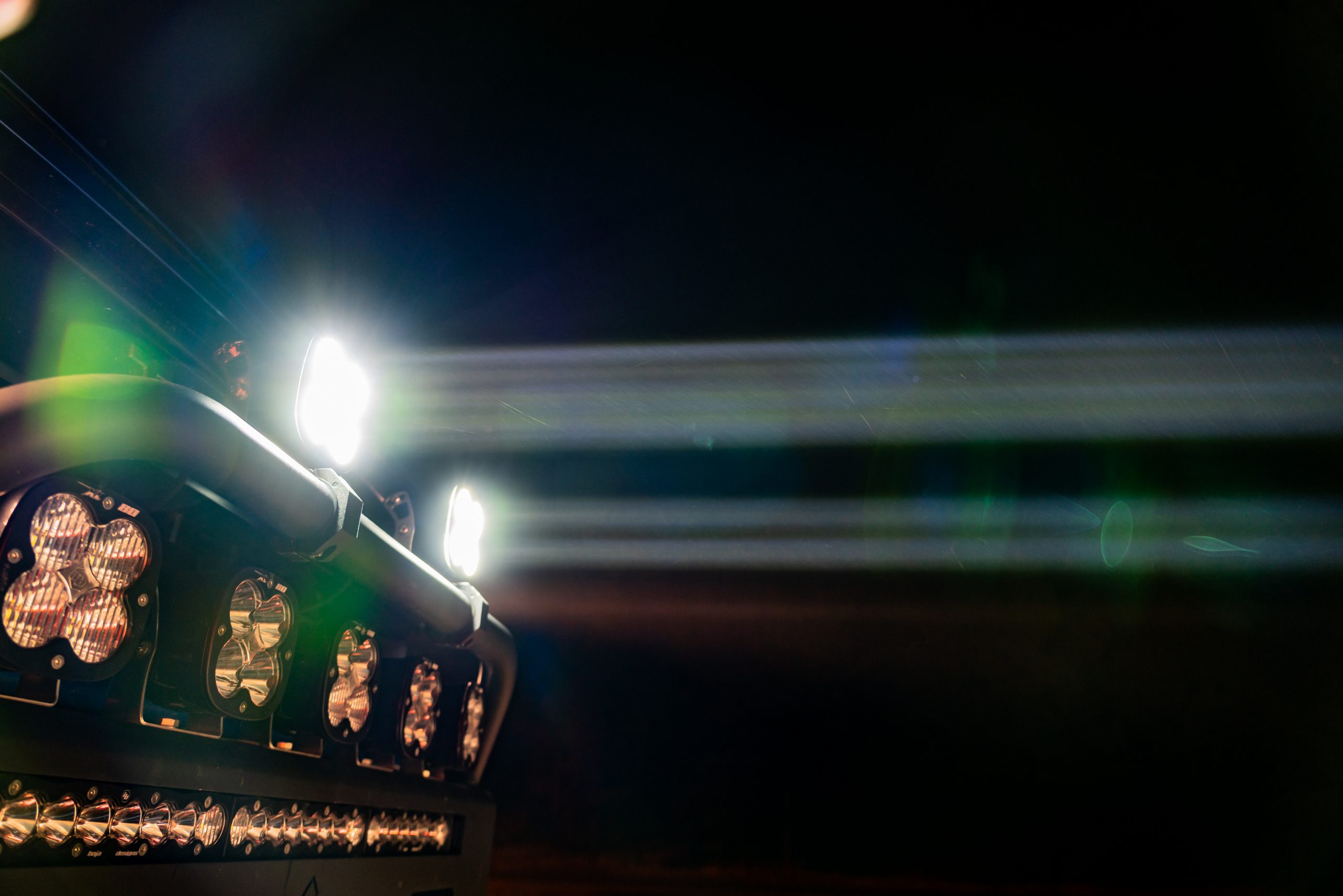
 To understand how Baja Designs laser lights work, it’s helpful to have an idea of how LED lights work. LED stands for Light Emitting Diode, and this particular type of diode emits light as a result of current being applied to the diode, where lost energy from electron flow creates photons of light. LED diodes can be engineered using different materials to create different colors of light, which is how red/green/blue (RGB) LEDs are made. Getting the light output from the LED chip into a beam of usable light is done with the help of reflectors that aim the beam, and lens covers that can either refract the light to create a dispersed flood-pattern beam, or simply allow the light to pass through, creating a spot beam. Baja Designs’ approach to LED light design is very diverse in that many of their lights can be reconfigured from a spot light to a flood light, or a combo of both just by swapping the lens cover.
To understand how Baja Designs laser lights work, it’s helpful to have an idea of how LED lights work. LED stands for Light Emitting Diode, and this particular type of diode emits light as a result of current being applied to the diode, where lost energy from electron flow creates photons of light. LED diodes can be engineered using different materials to create different colors of light, which is how red/green/blue (RGB) LEDs are made. Getting the light output from the LED chip into a beam of usable light is done with the help of reflectors that aim the beam, and lens covers that can either refract the light to create a dispersed flood-pattern beam, or simply allow the light to pass through, creating a spot beam. Baja Designs’ approach to LED light design is very diverse in that many of their lights can be reconfigured from a spot light to a flood light, or a combo of both just by swapping the lens cover.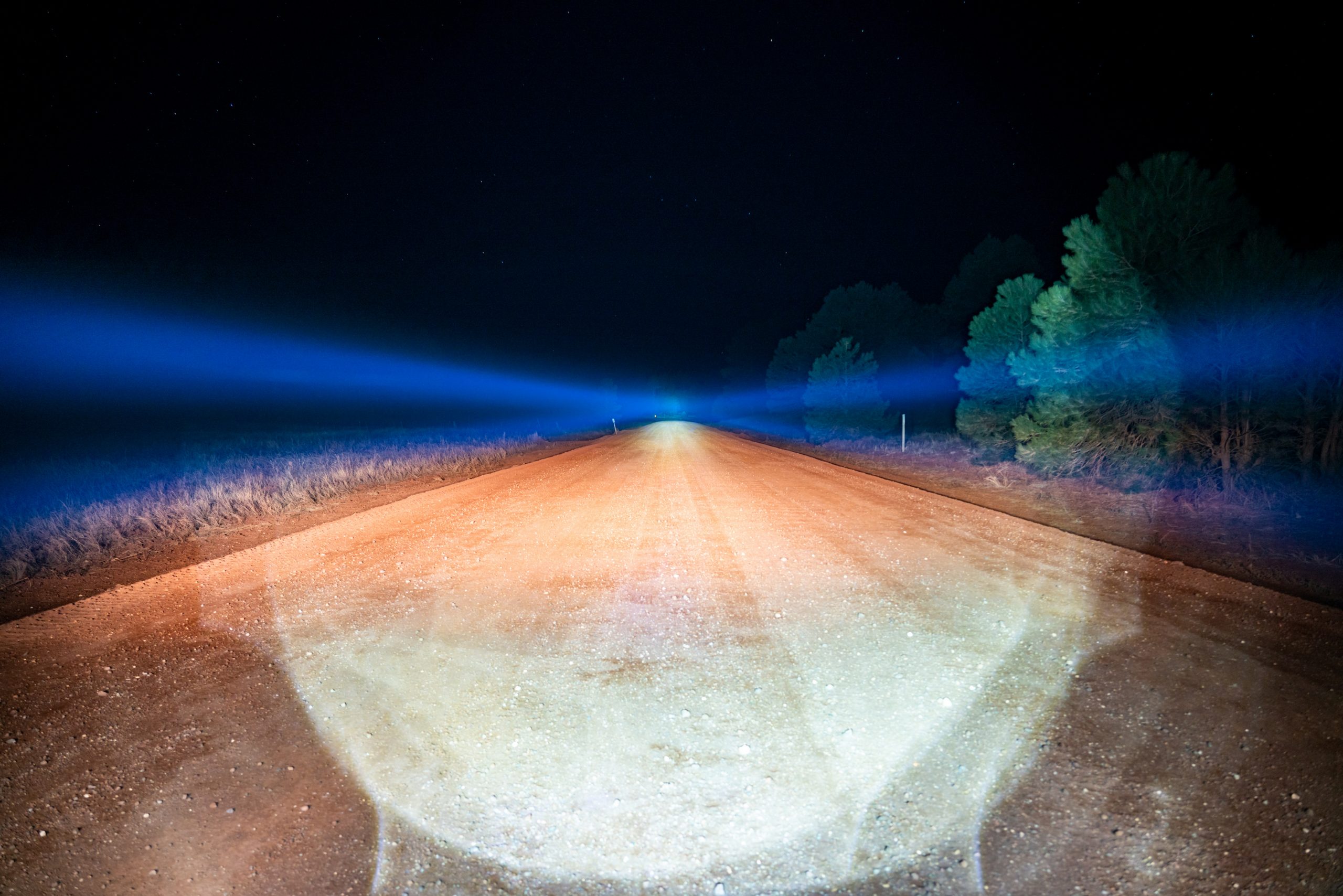 A Baja Designs laser light works by using a pair of tiny semiconductor lasers that emit blue laser light onto a fancy material called a phosphor that reflects the beam and changes the blue light into a white light. Since the laser diodes are super-tiny to begin with, the spot-beam of light they emit onto the phosphor is tiny – smaller than half a millimeter. This tiny phosphor reflects a tiny beam of white light, and by using a similar reflector and spot-pattern lens cover, Baja Designs created a light that can shoot a hyper focused beam over incredible distances. And now you know why The Scientists of Lighting is a very apt title. Sorry for all of the tech talk, but it’s important to know that when BD says laser lights, they’re actually talking about light created from semiconductor lasers, and not just trying to put cool marketing terms on things. Laser lights are a thing – and seeing them at work is stunning.
A Baja Designs laser light works by using a pair of tiny semiconductor lasers that emit blue laser light onto a fancy material called a phosphor that reflects the beam and changes the blue light into a white light. Since the laser diodes are super-tiny to begin with, the spot-beam of light they emit onto the phosphor is tiny – smaller than half a millimeter. This tiny phosphor reflects a tiny beam of white light, and by using a similar reflector and spot-pattern lens cover, Baja Designs created a light that can shoot a hyper focused beam over incredible distances. And now you know why The Scientists of Lighting is a very apt title. Sorry for all of the tech talk, but it’s important to know that when BD says laser lights, they’re actually talking about light created from semiconductor lasers, and not just trying to put cool marketing terms on things. Laser lights are a thing – and seeing them at work is stunning.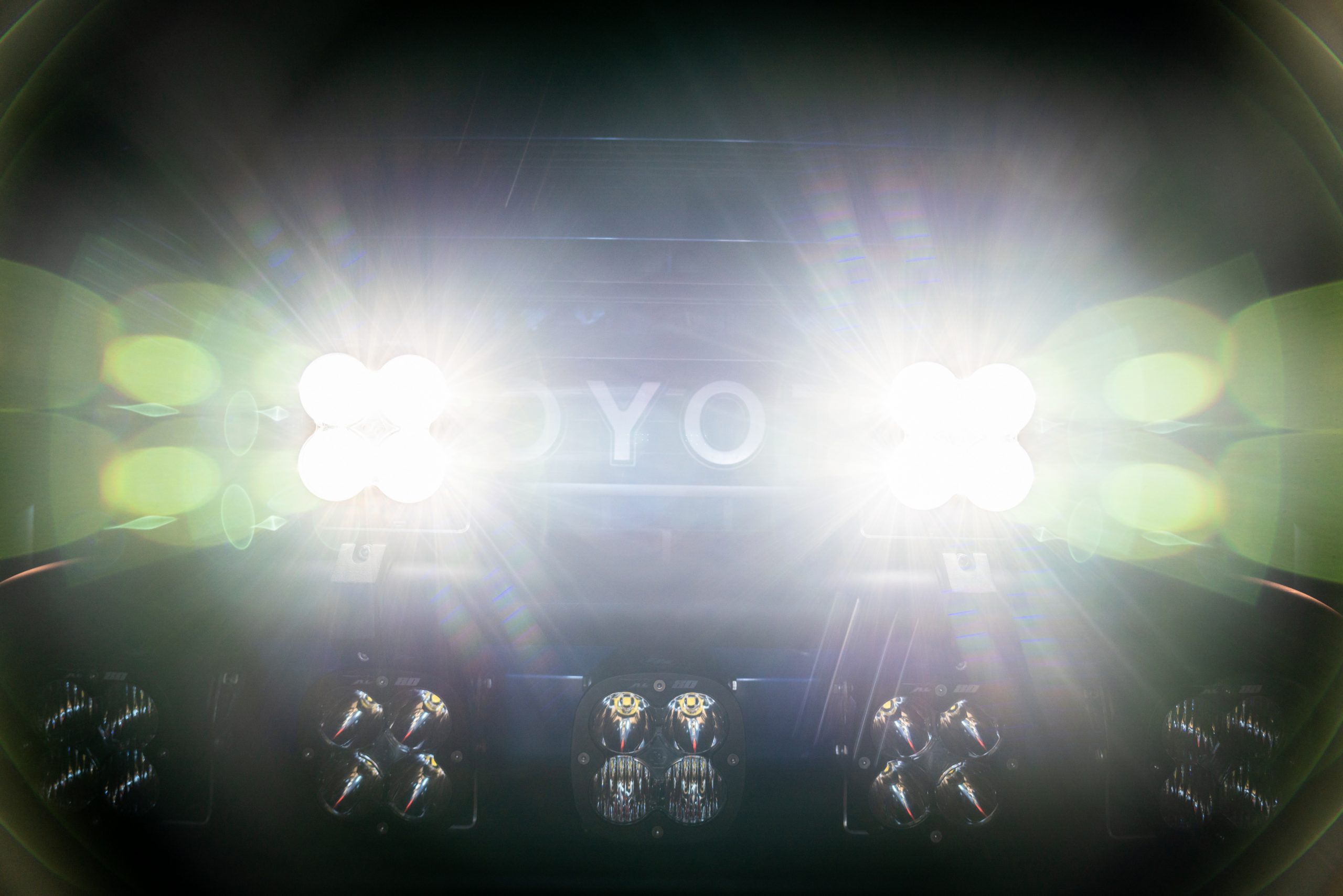


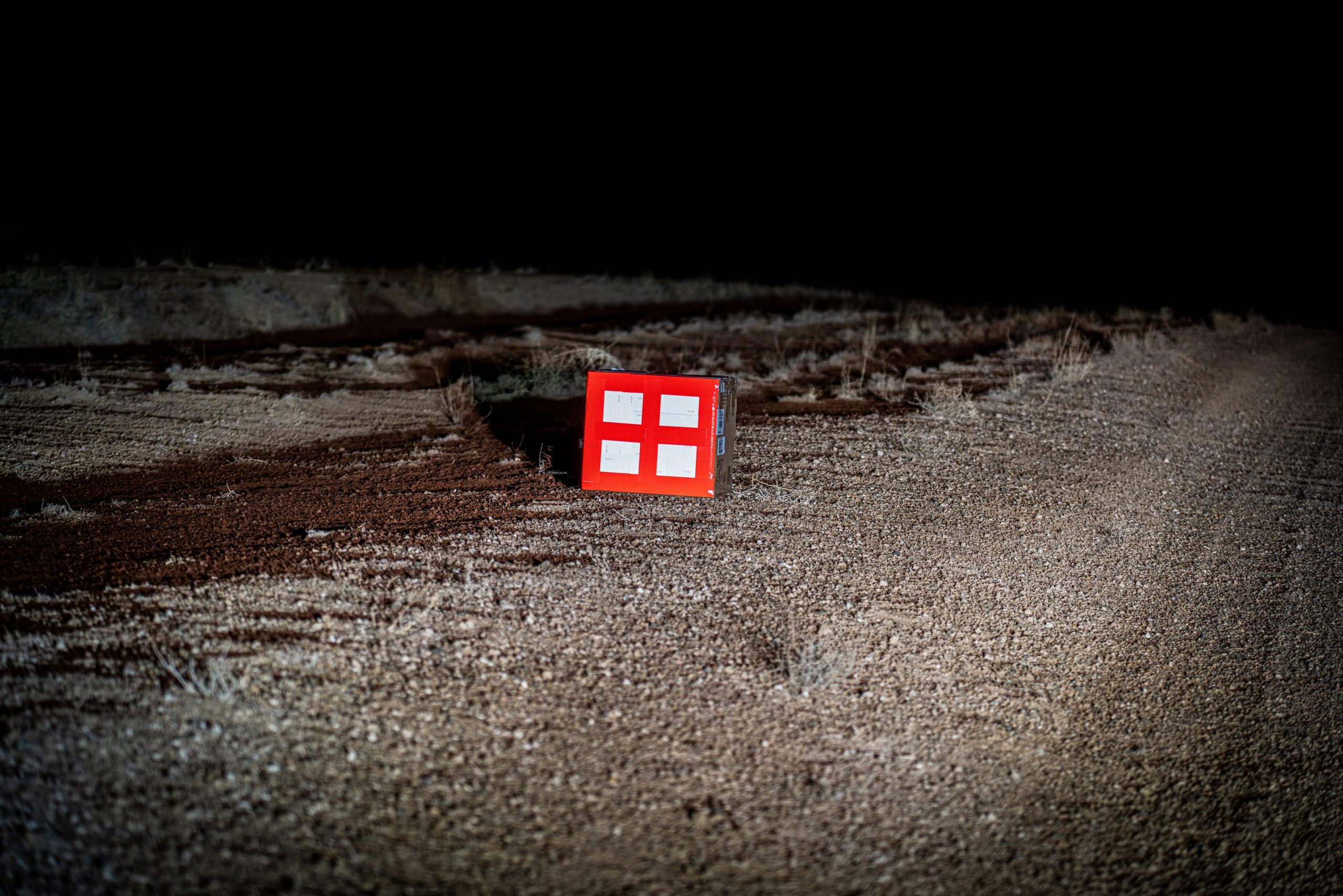

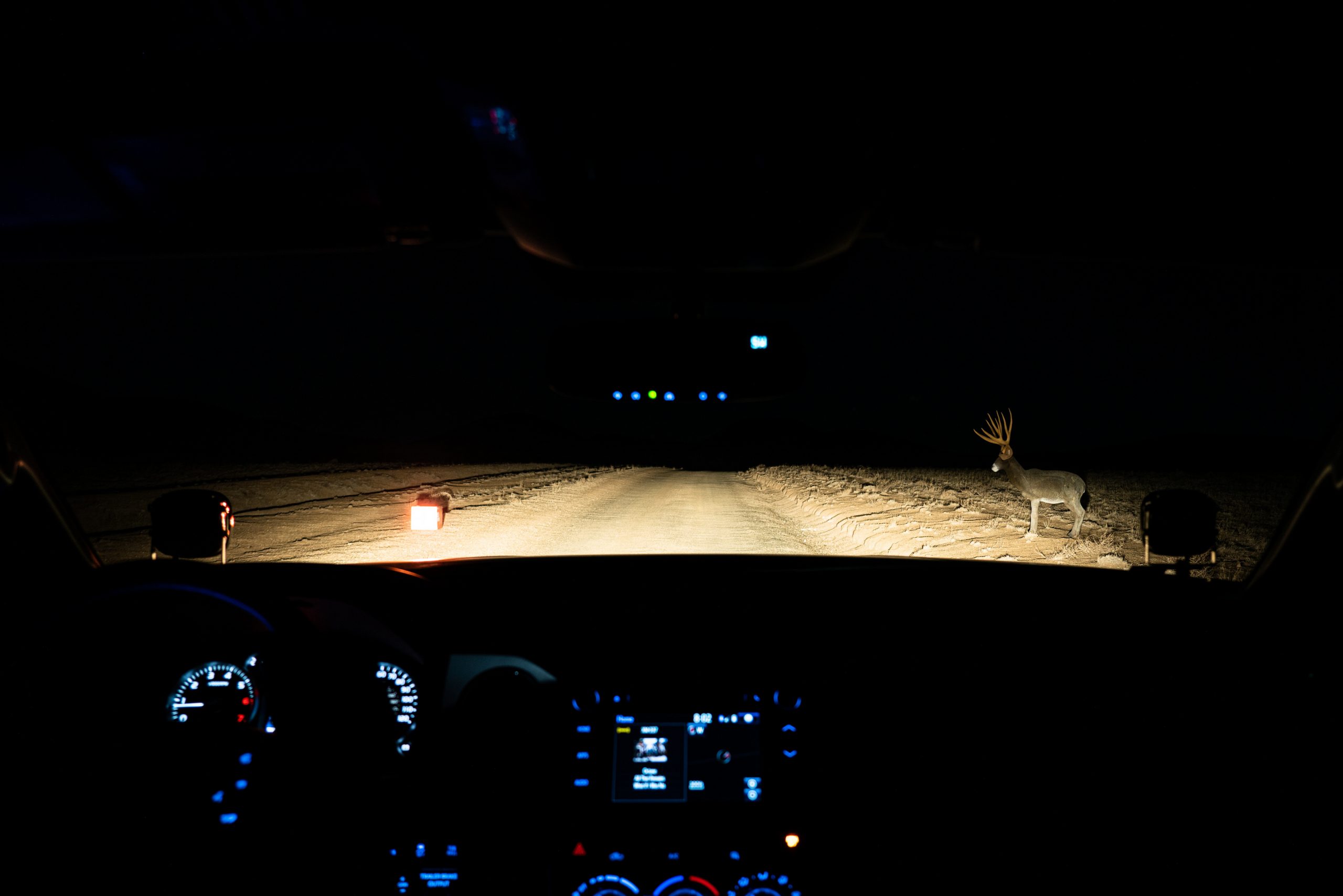 To quantify just how far laser lights will go, I cooked up a little test on a section of dirt road where I could measure just how far various lights on my truck could throw light. At one end of the road, I placed an object on each side of the road. On the right side I placed Booner, the comically proportioned 3D Archery deer target, and on the left side of the road I placed a box covered with DOT C2 reflective tape, which would be my ranging target. Then starting with my Tundra’s low beam headlights, I backed up until couldn’t see Booner anymore – only the reflective box I placed on the other side of the road, which I shot with a range finder to measure how far I was from the deer. I then turned on my high-beams (Toyotas have strong high beams) and repeated the process.
To quantify just how far laser lights will go, I cooked up a little test on a section of dirt road where I could measure just how far various lights on my truck could throw light. At one end of the road, I placed an object on each side of the road. On the right side I placed Booner, the comically proportioned 3D Archery deer target, and on the left side of the road I placed a box covered with DOT C2 reflective tape, which would be my ranging target. Then starting with my Tundra’s low beam headlights, I backed up until couldn’t see Booner anymore – only the reflective box I placed on the other side of the road, which I shot with a range finder to measure how far I was from the deer. I then turned on my high-beams (Toyotas have strong high beams) and repeated the process.



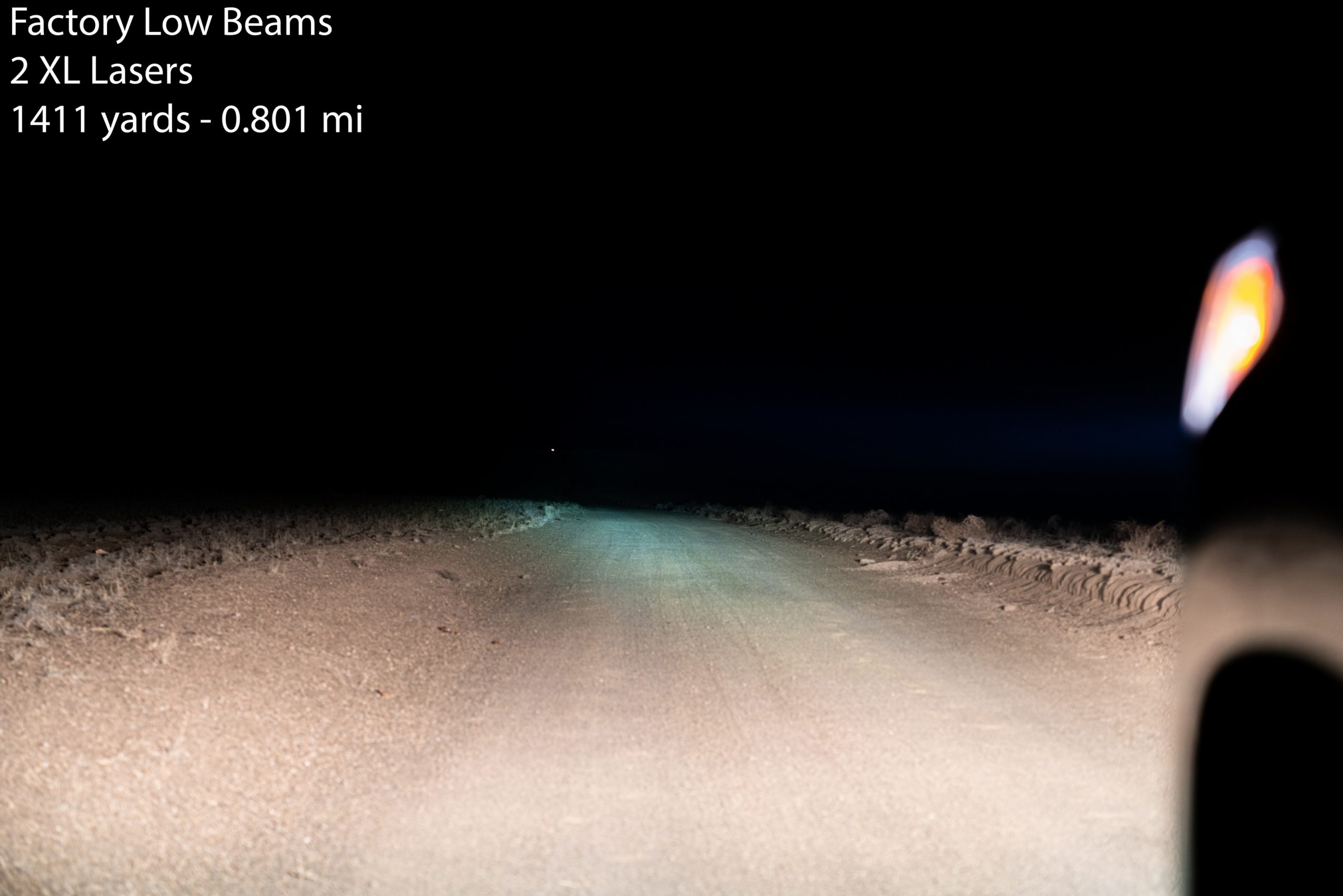


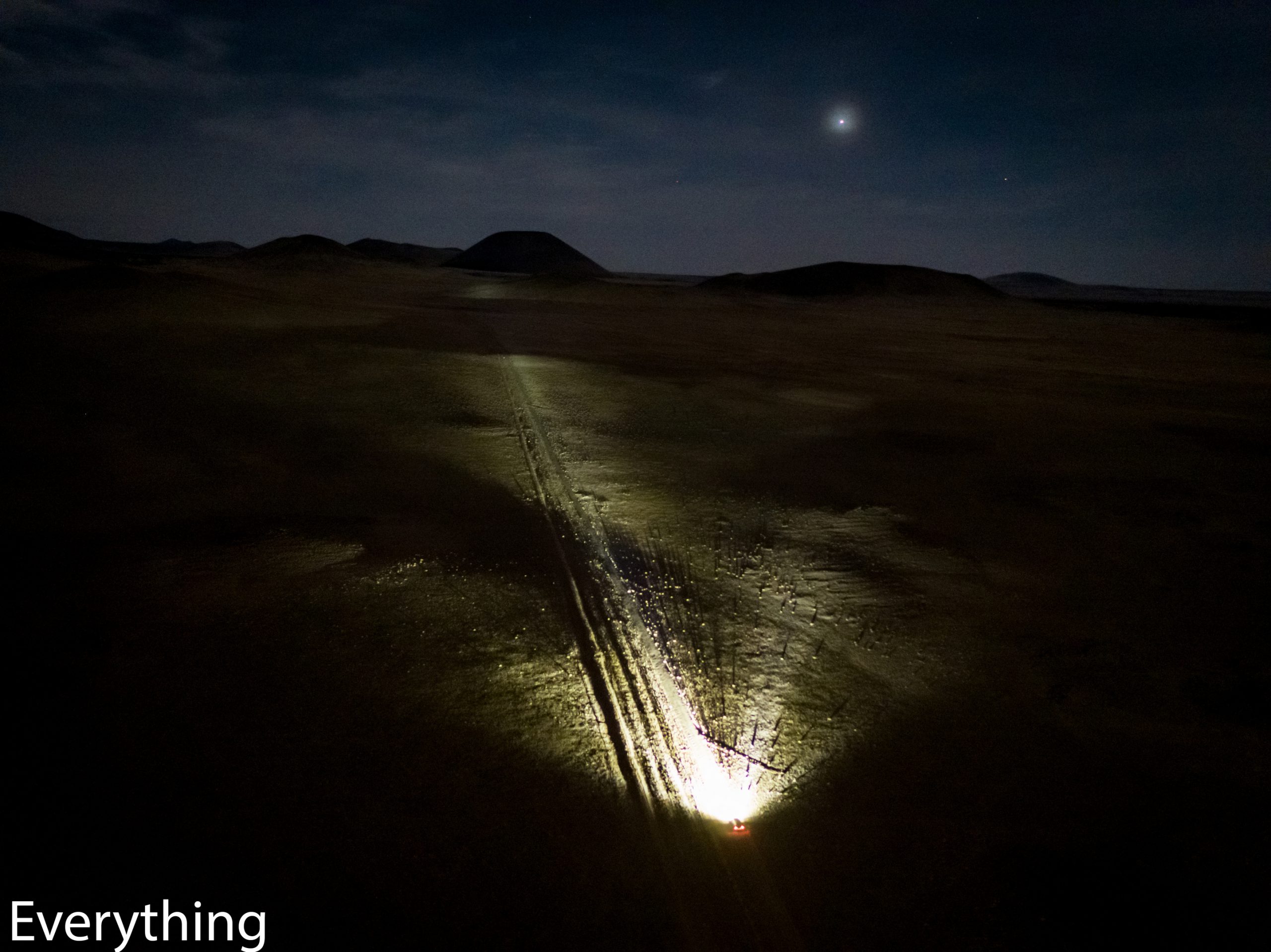 Editor’s Note: Seeing the deer (Booner) in the images as compressed for website use is really hard. Uncompressed JPGs can be viewed here. Please view at 100%. – Chad
Editor’s Note: Seeing the deer (Booner) in the images as compressed for website use is really hard. Uncompressed JPGs can be viewed here. Please view at 100%. – Chad In real world use, BD Laser lights are the exact tool you’re looking for if you find yourself wanting to see as far as possible into the night. They create a very narrow beam of light that is hyper focused for going long distances, so whether you’re trying to see something in the trail, or just trying to find your way to camp when your buddy’s cryptic directions tell you to “follow the road with the snags (dead trees) on right a quarter mile after the fork.” There isn’t a better light out there for seeing as far as possible at night.
In real world use, BD Laser lights are the exact tool you’re looking for if you find yourself wanting to see as far as possible into the night. They create a very narrow beam of light that is hyper focused for going long distances, so whether you’re trying to see something in the trail, or just trying to find your way to camp when your buddy’s cryptic directions tell you to “follow the road with the snags (dead trees) on right a quarter mile after the fork.” There isn’t a better light out there for seeing as far as possible at night.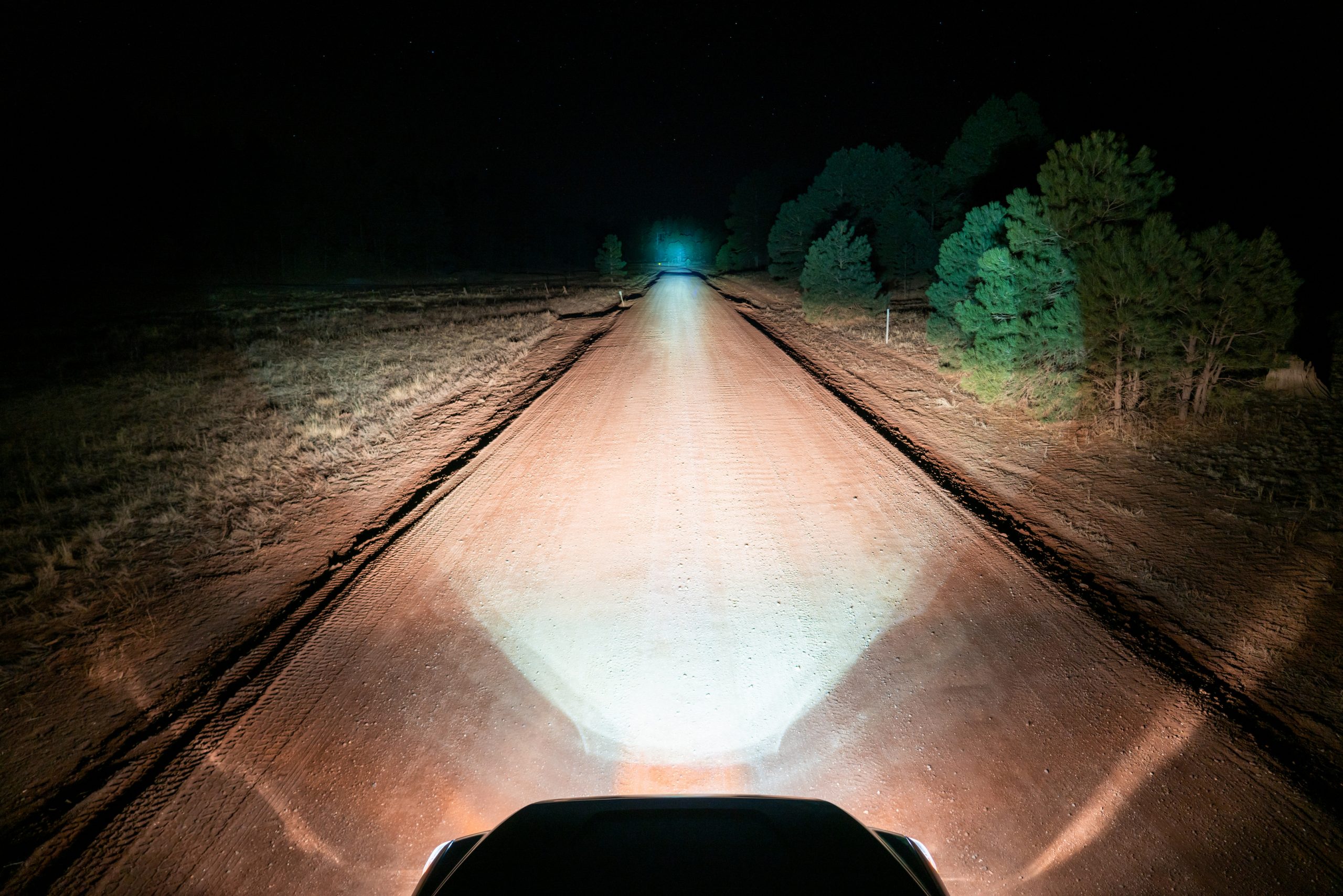 The trade off to having a hyper-focused beam of light is that aim is a critical factor for getting the most out of these lights. An adjustment of as little as a couple tenths of a degree can make all of the difference in getting the light where you want it, and if you’re a few points low or high, you’ll find that you’re aimed down at the road or off into space. So be prepared to take some time setting your laser lights up. I used a framing level to make sure that both XL Lasers were aimed the same direction left to right, and a digital angle gauge became an invaluable tool for adjusting the tilt, or up-down axis of the lights. Once you have the aim dialed however, you can see into the night like never before, and the novelty of seeing so far at night has yet to wear off. Yet there’s more to this lighting thing than just being able to light up the next county.
The trade off to having a hyper-focused beam of light is that aim is a critical factor for getting the most out of these lights. An adjustment of as little as a couple tenths of a degree can make all of the difference in getting the light where you want it, and if you’re a few points low or high, you’ll find that you’re aimed down at the road or off into space. So be prepared to take some time setting your laser lights up. I used a framing level to make sure that both XL Lasers were aimed the same direction left to right, and a digital angle gauge became an invaluable tool for adjusting the tilt, or up-down axis of the lights. Once you have the aim dialed however, you can see into the night like never before, and the novelty of seeing so far at night has yet to wear off. Yet there’s more to this lighting thing than just being able to light up the next county.
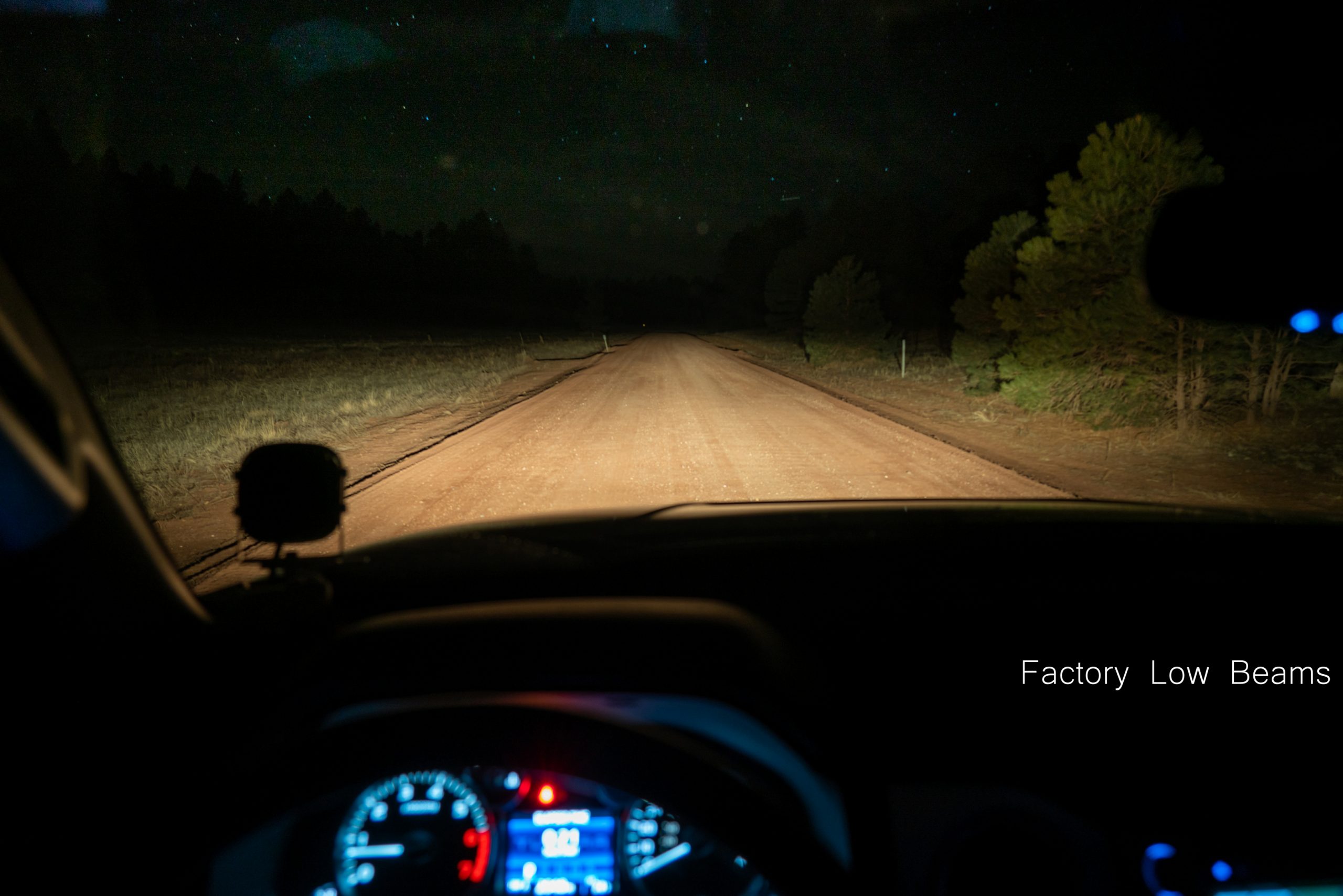



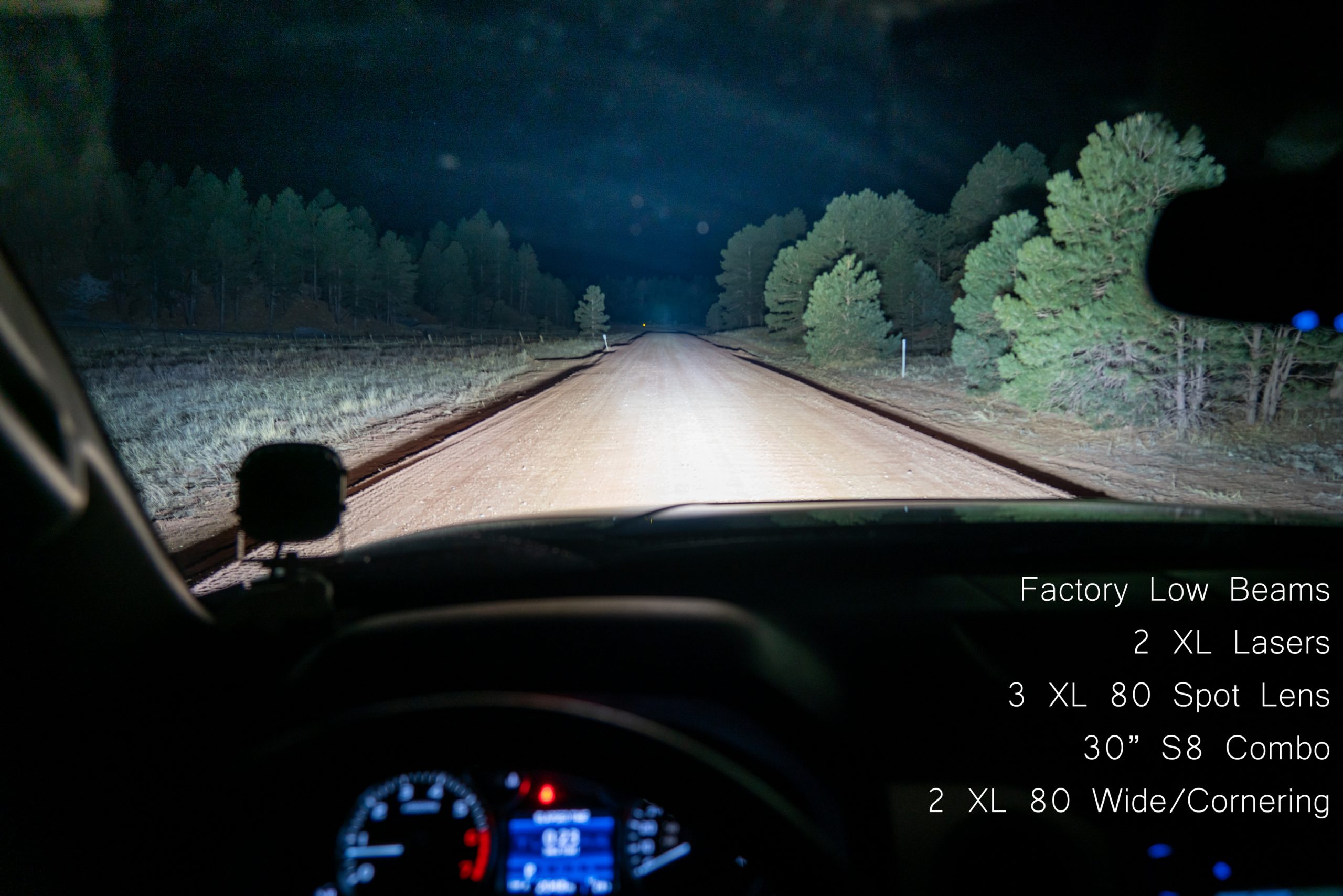

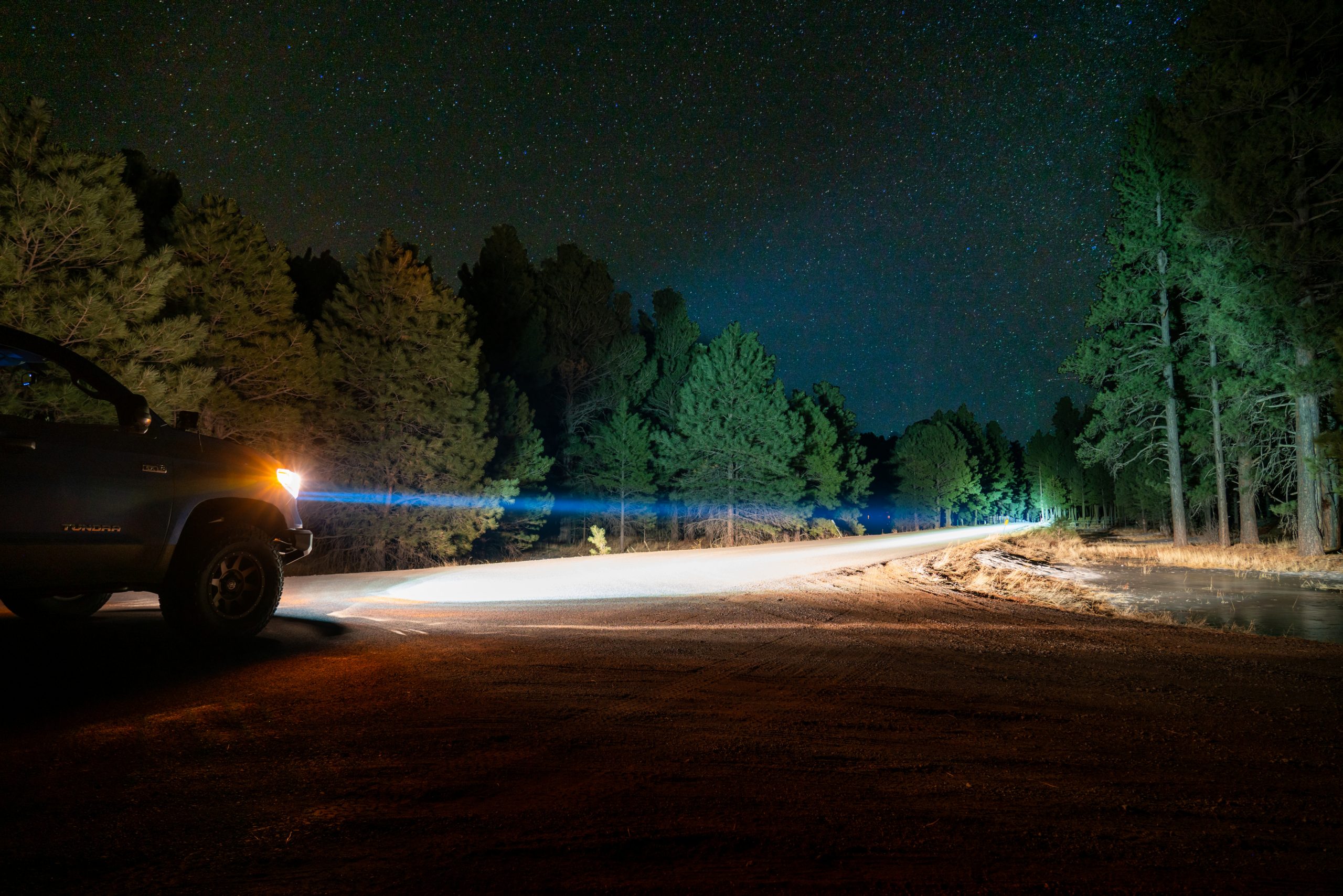 As for the XL Lasers that I’ve been playing with, they’re a great tool to add to my lighting toolbox, because they significantly bolster my long-range lighting. I’ve got each lighting zone mapped to it’s own switch on my
As for the XL Lasers that I’ve been playing with, they’re a great tool to add to my lighting toolbox, because they significantly bolster my long-range lighting. I’ve got each lighting zone mapped to it’s own switch on my 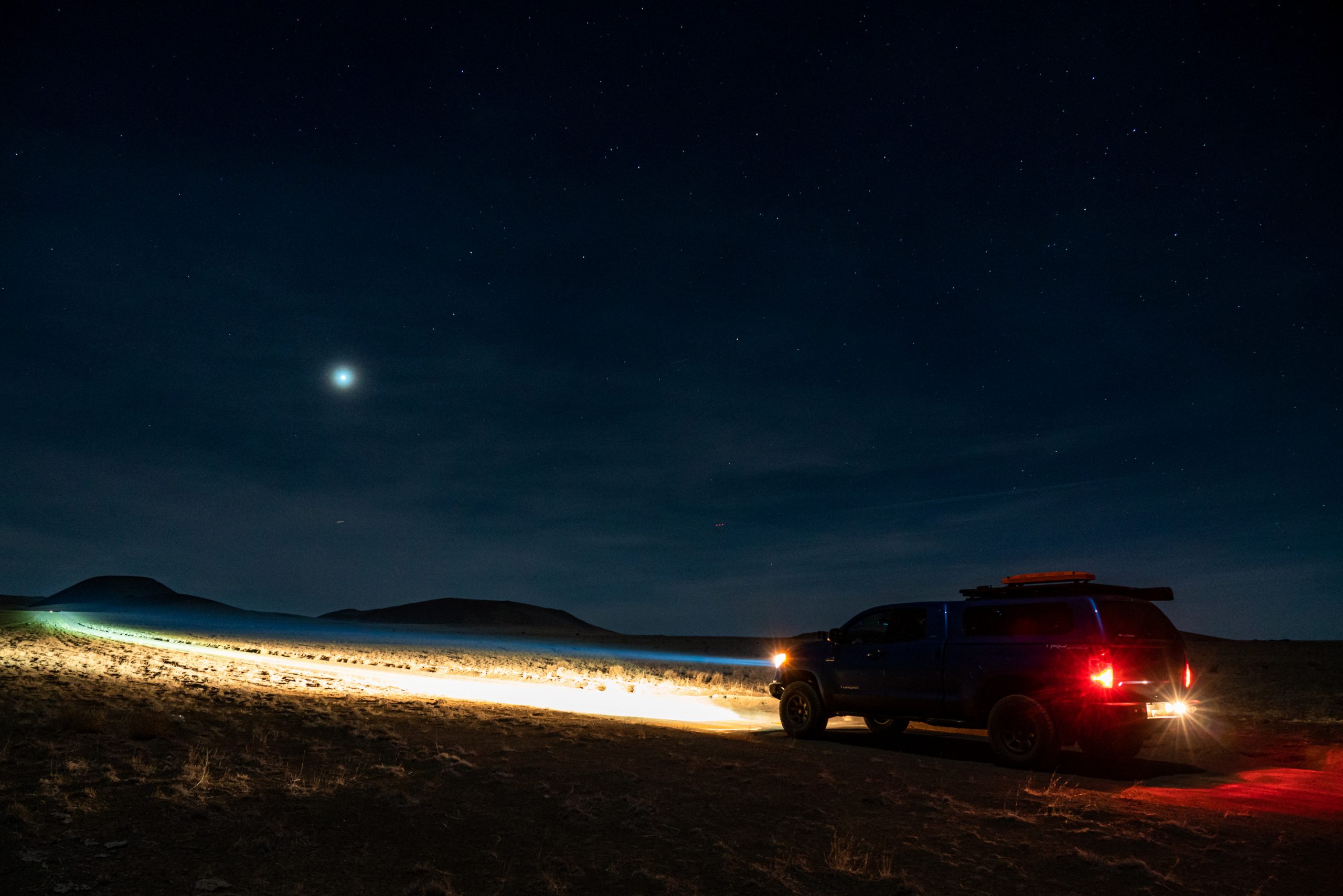
 Even if you’re not going race pace at night, if being able to see further into the night is of value to you, these laser lights are where you need to look if you want to cast light further than LED lights can shine. They are currently available in laser-only XLs, S1s, and as the extreme long range component of
Even if you’re not going race pace at night, if being able to see further into the night is of value to you, these laser lights are where you need to look if you want to cast light further than LED lights can shine. They are currently available in laser-only XLs, S1s, and as the extreme long range component of